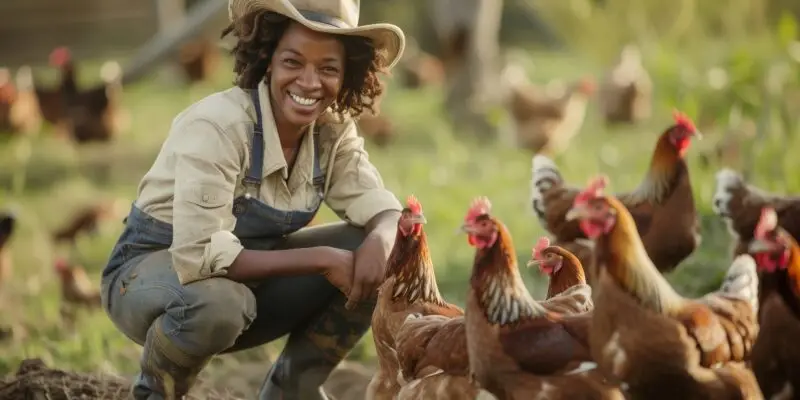Kienyeji chicken farming is a rewarding venture that promotes healthy living and sustainable agriculture. Here’s a step-by-step guide to help beginners get started and succeed:
Step 1: Research and Planning
- Understand the basics of Kienyeji chicken farming, including the specific needs of this breed.
- Identify your goals: Are you focusing on eggs, meat, or both?
- Draft a business plan that outlines your budget, target market, and projected returns.
Step 2: Select the Right Location
- Choose a location that is easily accessible and safe from predators.
- Ensure the area has adequate ventilation and is away from noisy or polluted environments.
Step 3: Build Appropriate Housing
- Design a poultry house that protects chickens from extreme weather, predators, and diseases.
- Allow for adequate spacing: 1-2 square feet per bird for optimal growth and comfort.
- Include nesting boxes for layers, perches, and proper drainage to maintain hygiene.
Step 4: Source Quality Chicks
- Buy chicks from reputable breeders to ensure good health and strong genetics.
- Verify that chicks are vaccinated against common diseases like Newcastle.
- Start with a manageable number of chicks (e.g., 50-100) and scale up as you gain experience.
Step 5: Equip Your Farm
- Feeding equipment: Feeders and drinkers that minimize waste.
- Lighting and heating: A brooder lamp for chicks to regulate temperature.
- Hygiene tools: Disinfectants, gloves, and cleaning supplies for maintaining biosecurity.
Step 6: Provide Balanced Nutrition
- Feed chicks with starter feed, growers with grower mash, and layers with layer mash.
- Include supplements like calcium and vitamins to boost immunity and productivity.
- Incorporate kitchen scraps or natural greens for cost-effective feeding.
Step 7: Health and Disease Management
- Develop a vaccination schedule to protect against common diseases.
- Observe your chickens daily for signs of illness such as lethargy, drooping wings, or unusual behavior.
- Maintain clean water and change bedding regularly to prevent infections.
Step 8: Record-Keeping and Monitoring
- Keep records of feed costs, vaccination schedules, and egg/meat production.
- Analyze these records periodically to identify areas for improvement and maximize profitability.
Essential Tools and Equipment Needed
- Poultry Housing Materials – Timber, wire mesh, and roofing.
- Feeding and Watering Equipment – Feeders, drinkers, and water storage tanks.
- Brooder Setup – Heat lamp, thermometer, and bedding for chicks.
- Hygiene Supplies – Cleaning tools, disinfectants, and a compost bin for waste.
Key Considerations for Beginners
- Space Requirements: Avoid overcrowding to prevent stress and disease outbreaks.
- Climate: Ensure adequate ventilation in hot areas and warmth during cold weather.
- Sourcing Chicks: Work with verified breeders for healthy, high-yield chicks.
Common Mistakes to Avoid
- Starting Too Big: Begin small and scale gradually as you gain experience.
- Skipping Vaccinations: This can lead to devastating disease outbreaks.
- Poor Record-Keeping: Without records, it’s hard to identify problems or measure profitability.
- Neglecting Hygiene: Dirty housing leads to diseases and lower productivity.


